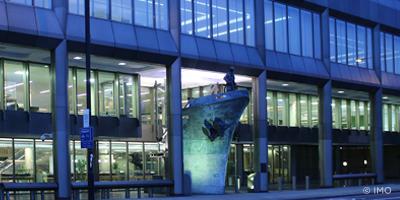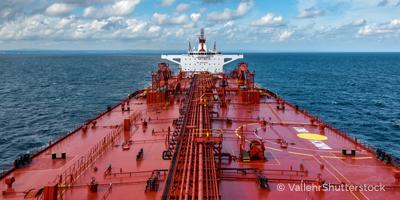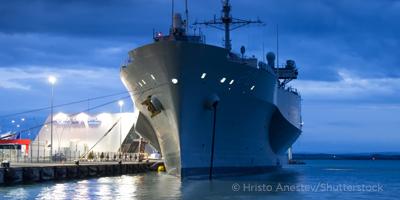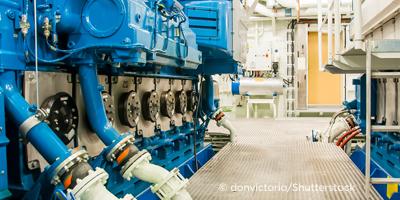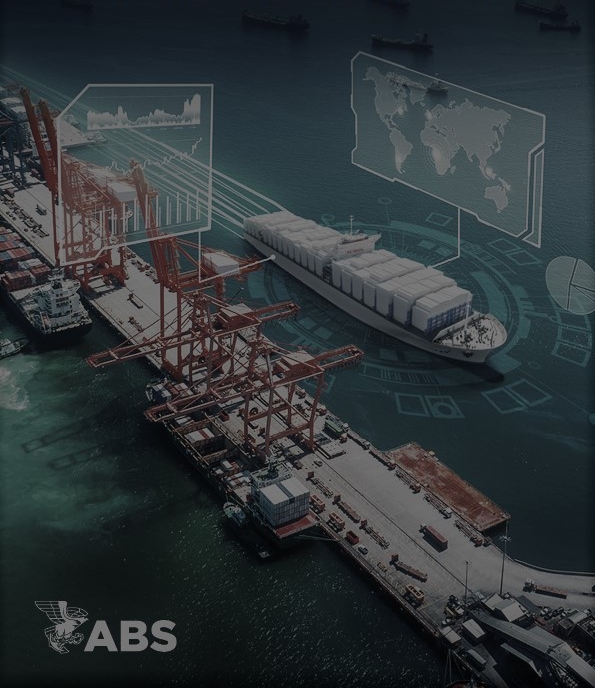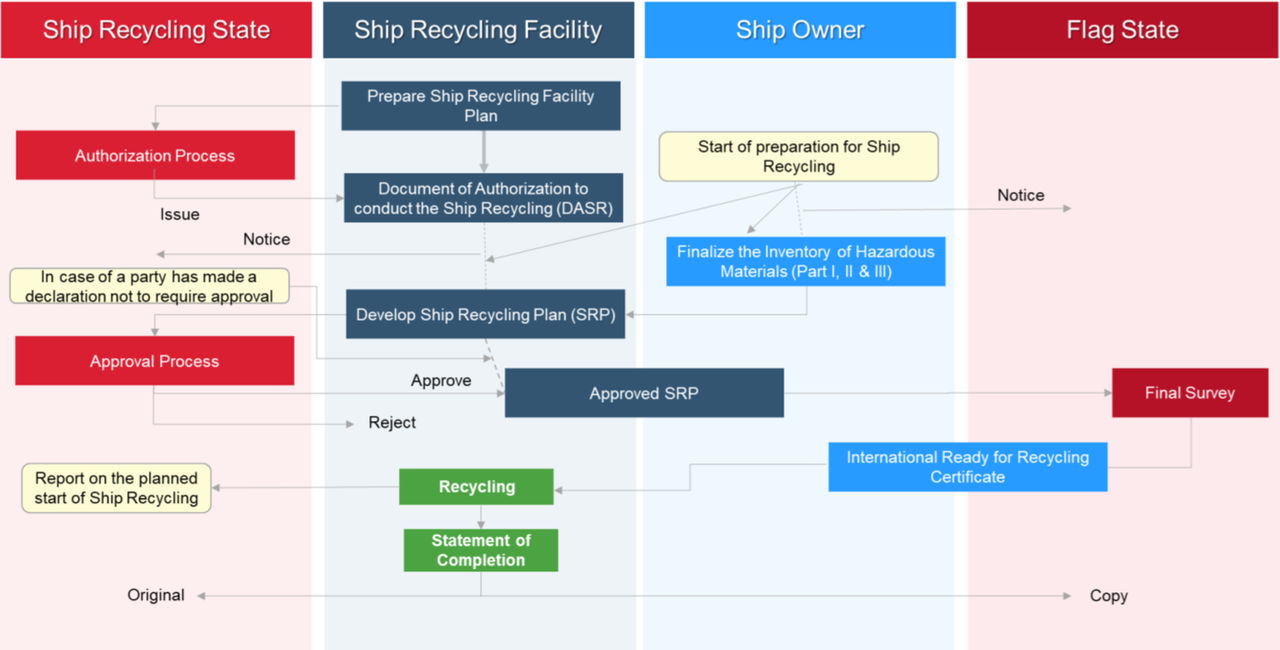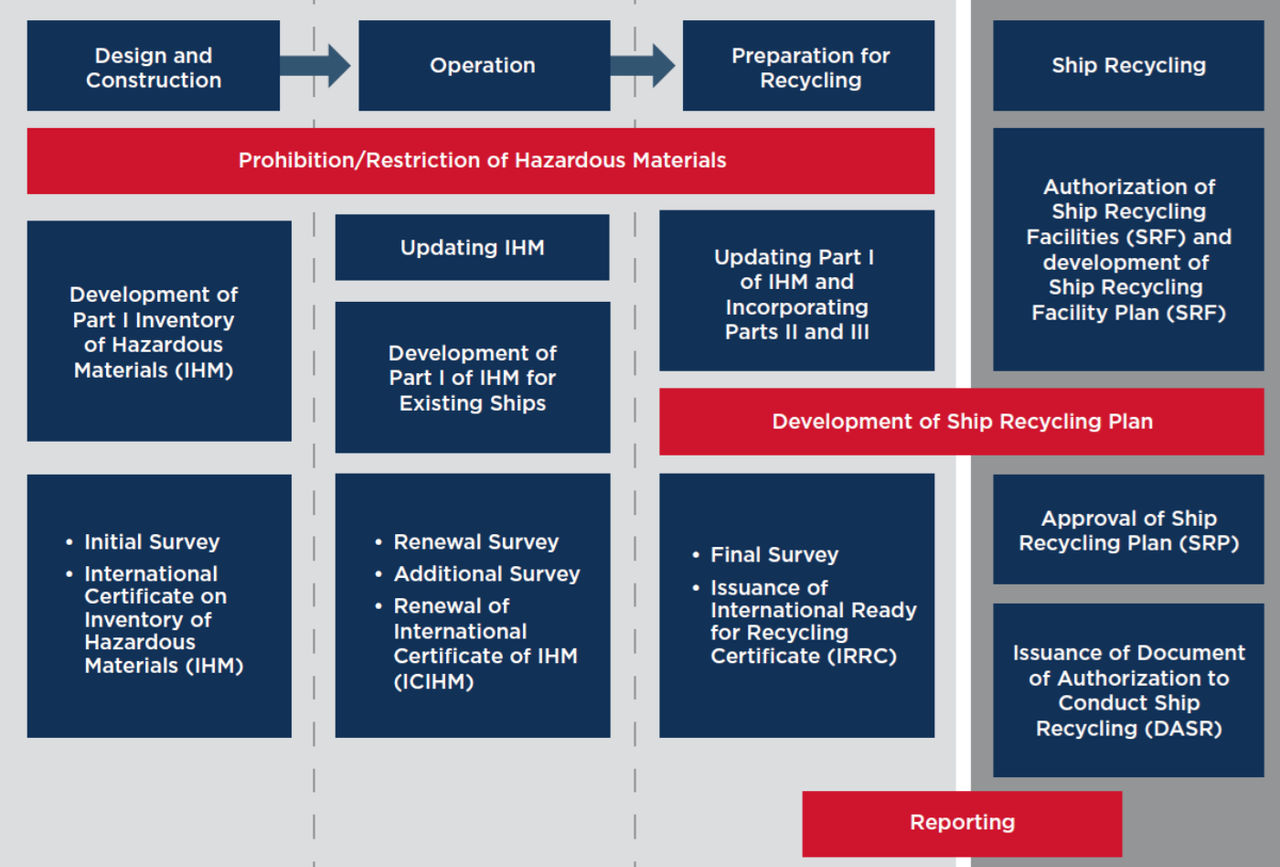1. What happens if a ship does not comply with the EU SRR?
If a ship subject to European Union’s (EU) Ship Recycling Regulation (SRR) does not submit Inventory Certificate/Statement of Compliance (SoC) supplemented by Part I of the Inventory of Hazardous Materials (IHM) it may be warned, detained, dismissed or excluded from the ports or offshore terminals in the EU.
Failure to update the IHM is not considered a detainable deficiency, but any inconsistencies shall be reported to the administration or the relevant authority concerned.
2. Can EU-flagged ships be recycled outside the EU?
European Union (EU)-flagged ships are only recycled at ship recycling facilities that are included in the European List. The European List now contains 43 facilities: 31 yards located in Europe (EU, Norway and the United Kingdom), 11 in Türkiye, and one in the United States.
3. On New Ships, is it necessary to collect MDs and SDoCs for every item?
Material Declarations (MDs) should be prepared for each product regardless of the existence of hazmat materials.
A single Supplier’s Declarations of Conformity (SDoC) may refer to several items of conformity declarations as long as each item and its related product information and supplementary information can be clearly identified. The same SDoC ID number and product must be provided in both the MD and SDoC.
4. Who are the ABS approved service suppliers for IHM?
The list of approved service suppliers for Inventory of Hazardous Materials (IHM) is available on ABS website (Recognized Service Supplier Database Search)
5. What is the timeline to comply with HKC?
The Hong Kong Convention (HKC) entered into force on 26 June 2025. All new ships contracted for construction on or after this date must have an Inventory of Hazardous Materials (IHM) and the International Certificate on Inventory of Hazardous Materials (ICIHM) or Statement of Compliance (SoC) in place upon delivery.
Existing ships are to have a valid Certificate within five years of the Convention's entry into force on 26 June 2025, or before going for recycling if that occurs earlier.
6. For ships registered under a flag which hasn’t ratified HKC is it required to comply with HKC?
Yes. Even if a ship is registered under a flag State that has not ratified the Hong Kong Convention (HKC), it must comply with the Convention’s requirements when entering the ports or waters of a country that has ratified the HKC. This means such ships must have on board a Statement of Compliance (SoC).
7. Should the validity of IHM Certificate be harmonized with all other Statutory Certificates?
Hong Kong Convention (HKC) certificates should be harmonized with the surveys required by other applicable statutory instruments.
8. Is IHM included in the annual survey?
Vessels with the Inventory of Hazardous Materials (IHM) notation will be subjected to an annual survey in accordance with the ABS Rules in the course of completing other annual and periodical surveys.
9. My ship has already a valid Hong Kong SoC on IHM. How do I replace it with an ICIHM?
The ship is required to have on board the International Certificate on Inventory of Hazardous Materials (ICIHM) by 26 June 2030. To comply, shipowners should request the issuance of the Certificate at the time of the next renewal survey. However, for ships flying the flag of party to the Hong Kong Convention (HKC), if there is a valid Statement of Compliance (SoC) on Inventory of Hazardous Materials (IHM) and IHM Part I has been reviewed by ABS in accordance with resolution (MEPC).269(68), MEPC.379(80) and/or European Union’s (EU) Ship Recycling Regulation (SRR) (EU No.1257/2013), the existing SoC may be reissued as an ICIHM with the same validity as the existing SoC, without an additional shipboard inspection/survey, provided the IHM has been maintained and updated as required.
10. What is the required documentation for the IHM Renewal Survey?
The following documents will be required for the Renewal Survey:
1. Inventory of Hazardous Materials (IHM)
2. Material Declaration (MD)
3. Supplier’s Declaration of Conformity (SDoC)
4. Location Diagram of Hazmat
5. Quality management system — procedures to safeguard the proper updating of the IHM
11. What types of deficiencies under the HKC could lead to a ship being detained?
The Port State Control Officer are expected to use professional judgment to determine whether to detain a ship until any noted deficiencies are corrected or to allow it to sail with certain deficiencies that do not pose an unreasonable threat to the safe and environmentally sound recycling of ships. The following deficiencies are of such nature that may warrant the detention:
1. Failure to carry on board a valid International Certificate on Inventory of Hazardous Materials (ICIHM), or, if appropriate, a valid International
Ready for Recycling Certificate .
2. Noncompliance with the control measures for hazardous materials listed in Appendix 1 of the Convention
12. What are the requirements for ship recycling of UK-flagged vessels under the current regulations?
The U.K. has retained Regulation (EU) 1257/2013 on Ship Recycling in U.K. domestic law under the EU Withdrawal Act 2018. When preparing for recycling, the shipowner is obligated to notify the U.K. Administration with the required documentation as per MGN 633. United Kingdom flagged ships must be recycled at a U.K. approved ship recycling facility as per the Annex to MGN 656.
13. Is there a classification notation for IHM compliance?
Yes, ships that have had their Inventory reviewed and verified to the requirements of the IHM Guide and to the satisfaction of ABS survey, will receive the ABS notation Inventory of Hazardous Materials (IHM) upon owner’s request.
14. How to maintain the GP notation?
Ships that currently hold Green Passport (GP) notation will continue to be eligible to maintain the GP notation, provided the requirements contained within the ABS Guide for the Class Notation Green Passport (GP) continue to be satisfied.
15. How to convert the GP notation to IHM notation?
Existing vessels that have a Green Passport (GP) Notation may receive an IHM notation provided:
- The vessels have Inventories that have been prepared using the procedure for “new vessels” in compliance with 3/4.1 of the Inventory of Hazardous Materials (IHM) Guide, or
- The existing vessels which currently maintain an Inventory prepared by using the procedure for “existing vessels” in compliance with 3/4.2 of the IHM Guide, along with their Inventory’s being reviewed and revised where necessary by an ABS approved service supplier.
16. What certification is required for a ship registered under the Panamanian flag when calling EU Ports?
For ships flying the Panamanian flag, only one document is required on board. ABS is authorized to issue an interim International Hong Kong Convention (HKC) Certificate, which includes a remark for compliance with European Union’s (EU) Ship Recycling Regulations. Following this, the shipowner must apply for the full-term HKC certificate through the Panamanian flag Administration.
17. What certification is required for a ship registered under Liberia/Marshall Islands flag when calling EU Ports?
For ships registered under Liberia, or Marshall Islands flag Administrations, two documents are required on board: a Hong Kong Convention (HKC) certificate and a Statement of Compliance (SoC) for the European Union’s (EU) Ship Recycling Regulation (SRR).
For the Marshall Islands, ABS is authorized to issue the full-term HKC and SoC for EU SRR
For Liberia, ABS is authorized to issue a five-month interim HKC certificate and an interim SoC for EU SRR. The Liberian flag Administration will then issue the full-term certificates, valid for five years.
18. How will compliance with the HKC provisions be checked?
Ships may be subject to Port State Control inspections in any port or offshore terminal of another party to the HKC. This inspection may include verifying that there is a valid International Certificate on Inventory of Hazardous Materials onboard or, if the ship is scheduled to be recycled, an International Ready for Recycling Certificate
19. Can ships which fly the flag of a party to the HKC be recycled in a Ship Recycling Facility under the jurisdiction of a government which is not a party to the Convention?
No, as per Regulation 8 of the Convention, such ships can only be recycled at SRFs which are authorized in accordance with HKC (holding a DASR).
20. What is the definition of a Ship Recycling Facility under the HKC?
Ship Recycling Facility means a defined area that is a site, yard or facility used for the recycling of ships.
21. Can Ship Recycling Facilities acting under the jurisdiction of a party to the Hong Kong Convention recycle non-party ships?
As per regulation 17 of the HKC, Ship Recycling Facilities may take non-party ships if they meet the requirements of the Convention (i.e. they must have had equivalent surveys and documentation).
22. How to deal with the issue of the interplay between the Hong Kong and the Basel Conventions with respect to the transboundary movement of ships intended for recycling?
MEPC 82 approved HKSRC.2/Circ.1 on Provisional Guidance on the implementation of the Hong Kong and Basel Conventions, which recommends:
1. States that are parties to the Hong Kong Convention but are not parties to the Basel Convention
should apply the requirements of the HKC.
2. States that are parties to the Basel Convention but are not parties to the Hong Kong Convention
should apply the requirements of the Basel Convention, including its Ban Amendment, if they have expressed their consent to be bound by it.
3. States that are parties to both the HKC and the Basel Convention, should notify the Basel Convention Secretariat that the HKC's requirements
will be applied, and confirm that appropriate measures are in place to ensure environmentally sound management of hazardous wastes, as
required by the Basel Convention.




